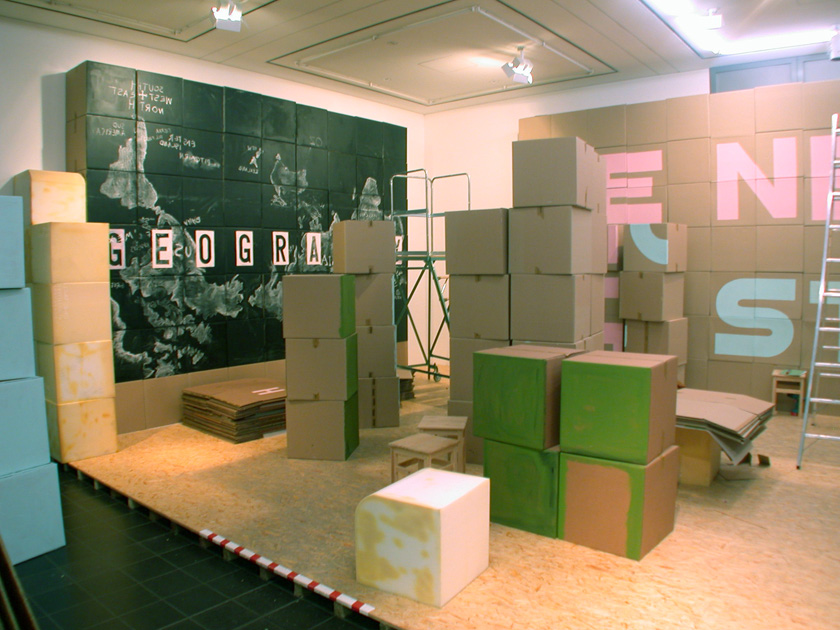 |
|
|
 |
|
1. Research Questions (October 2004)
creator(s) Barbara Sommermeyer (conservator)
Authenticity of the artwork and preventive care of different media and materials are crucial to preserve this artwork for future generations. Research Questions for the installation by Ross Sinclair:
Which methods will be most useful for the documentation and visualisation of the installation? Which materials have been used? Which set up has been created at each venue? How is the set up structured?
In Hamburg the artist has developed a composition especially designed for a space of 16 x 6,5m – an exhibition room in the Gallery of Contemporary Art. Taking down and re-installing the installation is part of current exhibition schemes in museum galleries. A useful straight forward documentation, which captures details of all parts and describes how they are composed, is therefore essential.
(see ’Exhibition History’ and ’Visualisation’)
How did the artist carry out the chalk drawing? Did he make any changes later on? Has transport led to damages or did visitors damage the drawing? Regarding consolidation the most useful aerosol technique needs to be determined.
The drawing is very fragile. So far it appears as if many visitors have wiped or removed parts of the drawing. Research will first go into photographic archival material of the installation. The artist is very interested in the preservation of this installation and agreed to an artist interview, that helps to answer some of the main questions. The interview gives insight into the overall making of the installation. The consolidation of the chalk drawing will be carried out without change of appearance.
(see ’Consolidation of Chalk Drawing’ and ’Artist Interview’)
How can electronic media and their presentation formats best be preserved and stored? Which characteristics are important for hardware and software? What is the best method for producing authentic copies of slides for display? How can typical characteristics of projection and sound be documented?
Electronic media undergoes very fast changes in technology. Sometimes materials and formats are no longer available after a short while. It is important to find ways of preserving the material and at the same time presenting it in the most authentic way. Documentation is necessary for recording the state of the art work. Information from the interview will be useful to gage the options from the artist’s point of view (see ’Slide Duplication’).
We kindly would like to acknowledge Ross Sinclair for his support and the cooperation within this research project.
PHOTO: Barbara Sommermeyer, Hamburger Kunsthalle
 Copyright Protected Copyright Protected
|